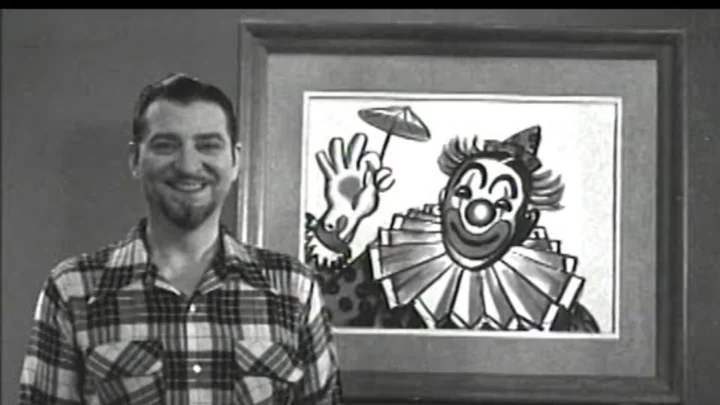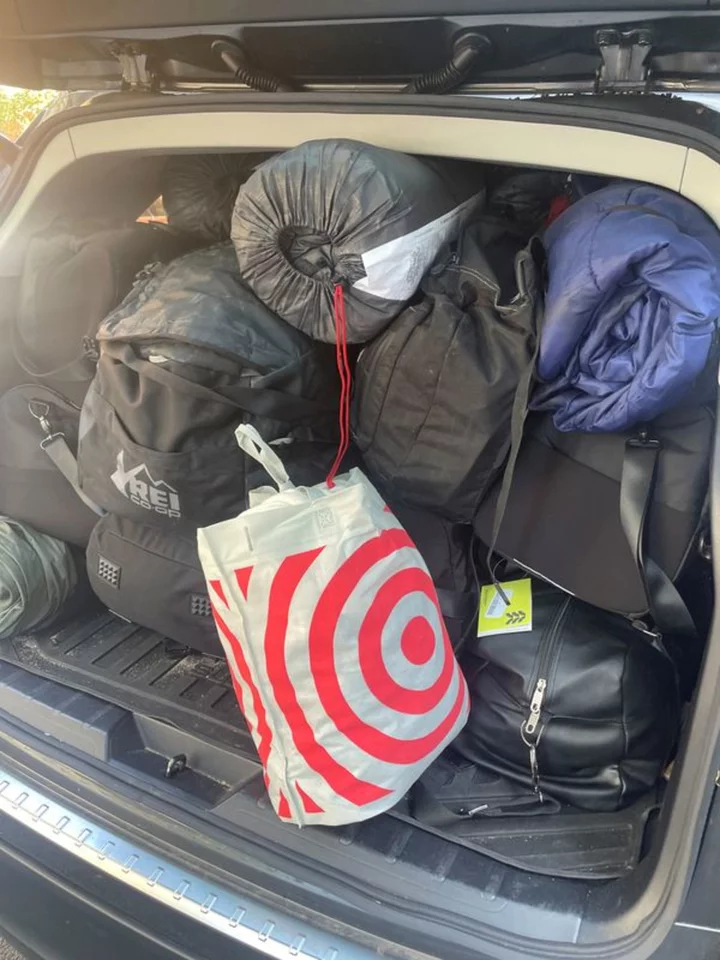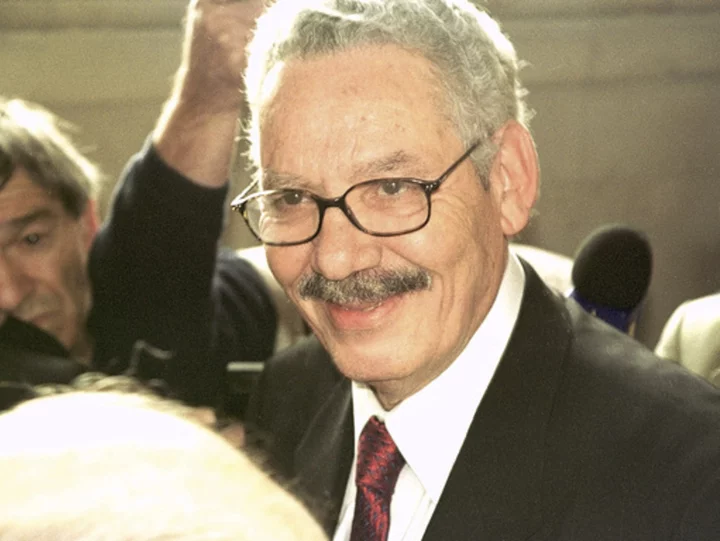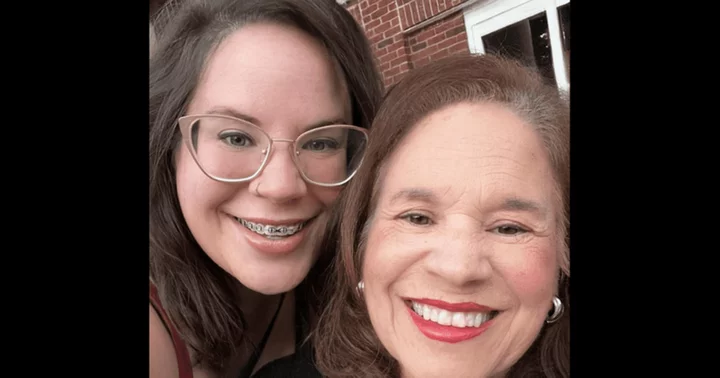On the screen, the artist pointed to four basic shapes. “If you can draw these simple forms,” he told viewers, “ball, cone, cube, and cylinder, you can draw a real picture the very first time you try.” A title card appeared—Learn to Draw—and then his name in chalk: Jon Gnagy.
From the earliest days of television in 1946 and on through 1960, Gnagy beamed into homes each week bearing the same message: No matter how clumsy or deficient in talent, anyone could produce an illustration with a few basic principles. In living rooms, kids and adults followed along; in bars, patrons grabbed napkins to emulate his technique. Thousands—and perhaps millions—of people drew landscapes, farms, ships, and clowns by following Gnagy’s lead, a long-distance mentorship that counted a young Andy Warhol among the participants. With his plaid shirts and Van Dyke beard, Gnagy was a soothing artistic presence decades before Bob Ross picked up a brush.
But if viewers believed Gnagy was getting wealthy from being a television personality, they were mistaken. He wasn’t paid a cent.
Drawn to It
Television had not been invented yet when Gnagy was born in 1907. He was raised on a farm in Varner, Kansas, as a Mennonite, a branch of Christianity that shares some of the same beliefs as the Amish. His father was a cabinetmaker who recognized that his son shared a similar sense of craft, though Jon’s form of expression was in pencil and ink rather than wood.
When he was an adult—or, at 17, close enough to it—Gnagy began venturing away, first to Tulsa, then to New York and later Philadelphia, working in public relations and advertising. In 1927, he married fellow artist Mary Jo Hinton, and kids Polly and Stephen followed. Gnagy’s first formal art instruction didn’t come until 1943, when he began taking lessons. He eventually settled into an instructor role himself, touring and offering art advice in drawing and painting.
“Cézanne remarked that all nature can be translated into cubes, spheres, cones, and cylinders,” Gnagy said in 1946, referring to French post-impressionist artist Paul Cézanne. “If these are combined to create a harmony of line movement, value movement, size movement, and shape movement, a work of art is created.”
Production of TV sets and parts for them had ground to a halt during World War II, but afterward, major cities began exploring the burgeoning medium of television. New York had an estimated 3800 sets, though orders were piling up quickly. TV was not yet a wasteland: There was hope it might amount to the world’s biggest classroom, offering educational programming to a sizable audience, with nary a real housewife or bachelor in sight.
In May 1946, NBC invited Gnagy to appear in a brief segment of Radio City Matinee, where he drew an oak tree. It was trial by fire, with Gnagy learning how to deliver instruction within the constraints of a television time slot.
He was successful, though the medium was so young that it’s possible fewer than 200 viewers saw the program. NBC gave him his own series, You Are an Artist, later that year. In each episode, Gnagy would select a scene and then take the viewer through its building blocks. A snow-capped mountain began with some easy squiggles; a portrait of geese with an angled oval.
The program ran for nearly three years, at which point NBC and other networks were leaning more heavily toward scripted dramas and game shows and less on educational series. Gnagy was, for a moment, erased.
Sketch Show
For a time, Gnagy put his easy charm to use as a television weatherman, which morphed into The Jon Gnagy Fishing and Weather Show. Gnagy’s second art instuctional series, Draw With Me (later renamed Learn to Draw) premiered as a syndicated program in 1950. As with the earlier show, Gnagy took viewers through a step-by-step process for creating a work of art. He was by then living in California but would return to New York each year to film 13 episodes.
Gnagy usually wrote out a 2000-word script, which he would read to someone. If that person was confused by something Gnagy instructed, he would revise it. The goal was to make art a practical exercise.
“Let’s not call my program art,” Gnagy told The New York Times in 1952. “It’s a fence-straddling combination of entertainment and education. My purpose is to get as many people as possible to sketch on their own and to be observant of the things around them. I’m trying to encourage them to turn their doodles—everybody is a doodler—into more intelligent objects. If people are observant, and learn a few principles of drawing, they can re-create from memory anything they want to draw.”
In lieu of a salary for his host duties, Gnagy opted for a kind of early home shopping approach. In each episode, he would tell viewers that they could purchase a Learn to Draw art kit at their local art supply store. Consisting of pencils, chalk, a shading stamp, a sketch pad, and an instructional book, the kit was how Gnagy monetized the show: He got a portion of the proceeds. Later, he expanded the line to include other mediums, like Learn Pastel Painting With Jon Gnagy and Learn Watercolor Painting With Jon Gnagy.
Eventually, station programmers lost interest in Learn to Draw. As a 15-minute program, it was difficult to slot into the 30- to 60-minute blocks of scheduling. By 1960, it was all but gone from the dial.
Gnagy entered semi-retirement in the 1970s and pursued private art instruction under The Jon Gnagy School of Painting banner as well as art lectures. In 1974 The Desert Sun reported Gnagy was set to headline a new series, How Do You Doodle, that aired locally in the Coachella Valley. It was the result of five years of work in which Gnagy perfected a new technique that allowed him to complete a color painting lesson in 30 minutes.
Despite his lowered profile, it was clear Gnagy had made his impression. Kits bearing his name continued to sell well into the 1980s and beyond, with at least one still available for sale today. Andy Warhol cited Gnagy’s show as an early inspiration. So did comic book artist Bernie Wrightson, known for his work on Swamp Thing and other horror titles.
Gnagy died of a heart attack (though some reported it as cardiac arrest) in 1981 at age 74. Many Gnagy admirers cite his affirmations as much as his artistic tips as what inspired them to pursue a career in art. In Gnagy’s world, there were no borders to becoming an illustrator, only cubes and cylinders. Or, as his one of his art kit ads put it, “Who’s your favorite artist? It could be you.”
Related Tags
ART TELEVISION TV ENTERTAINMENT ARTIST KIDS WORK Pop Culture NEWS History Home / ART








